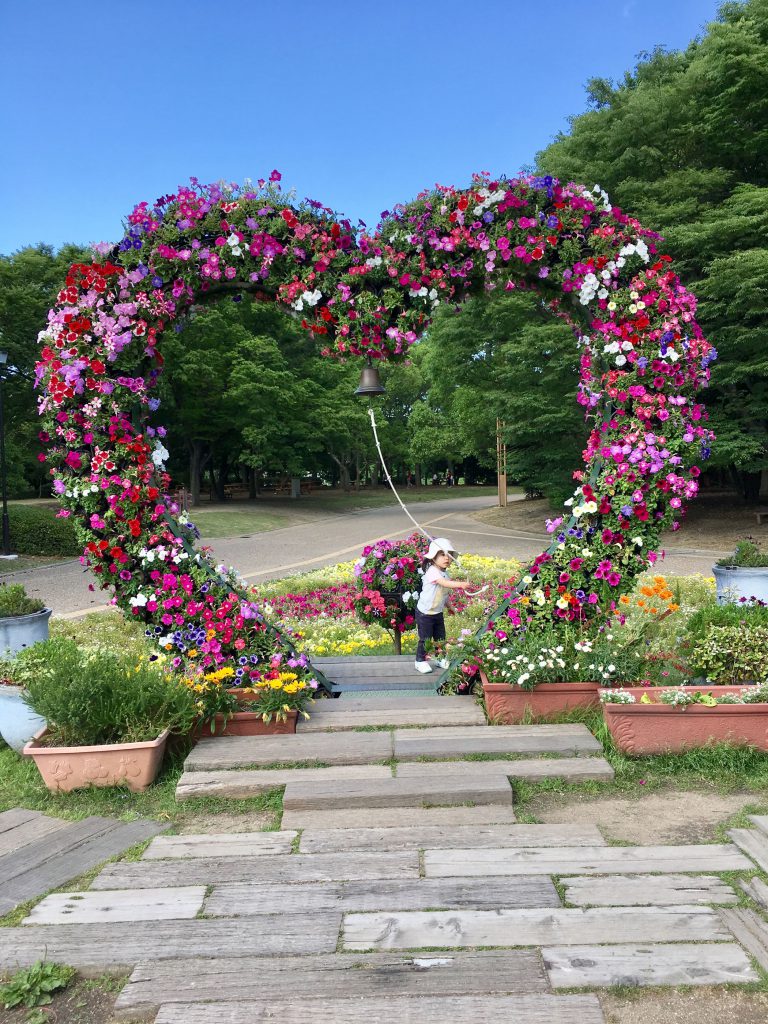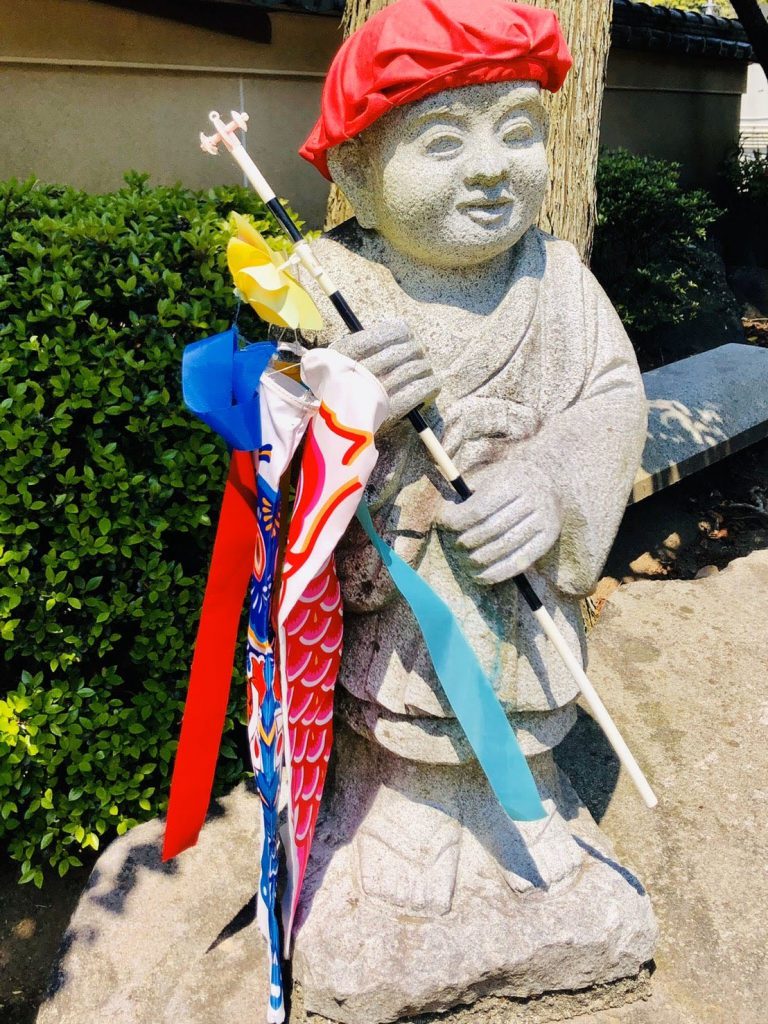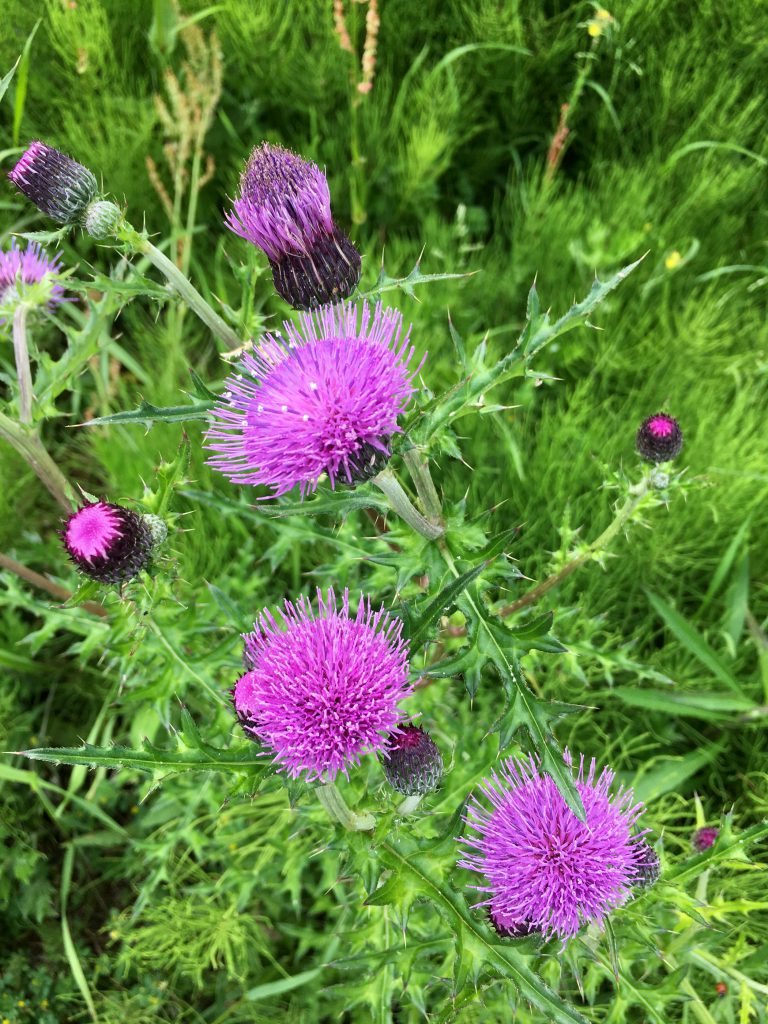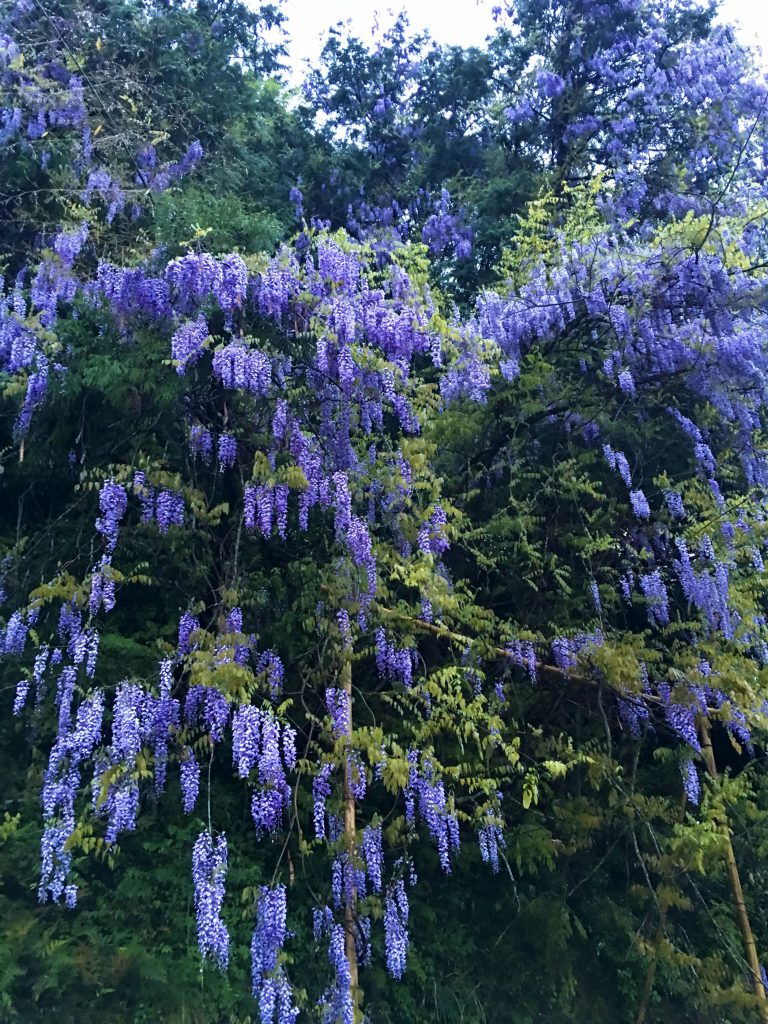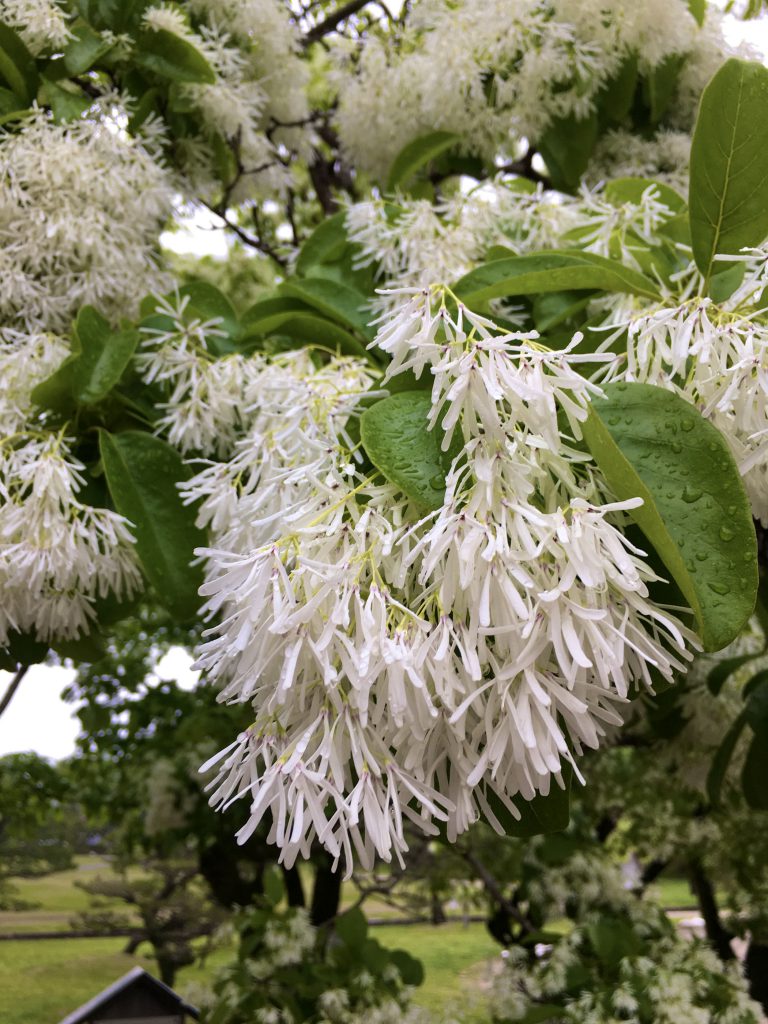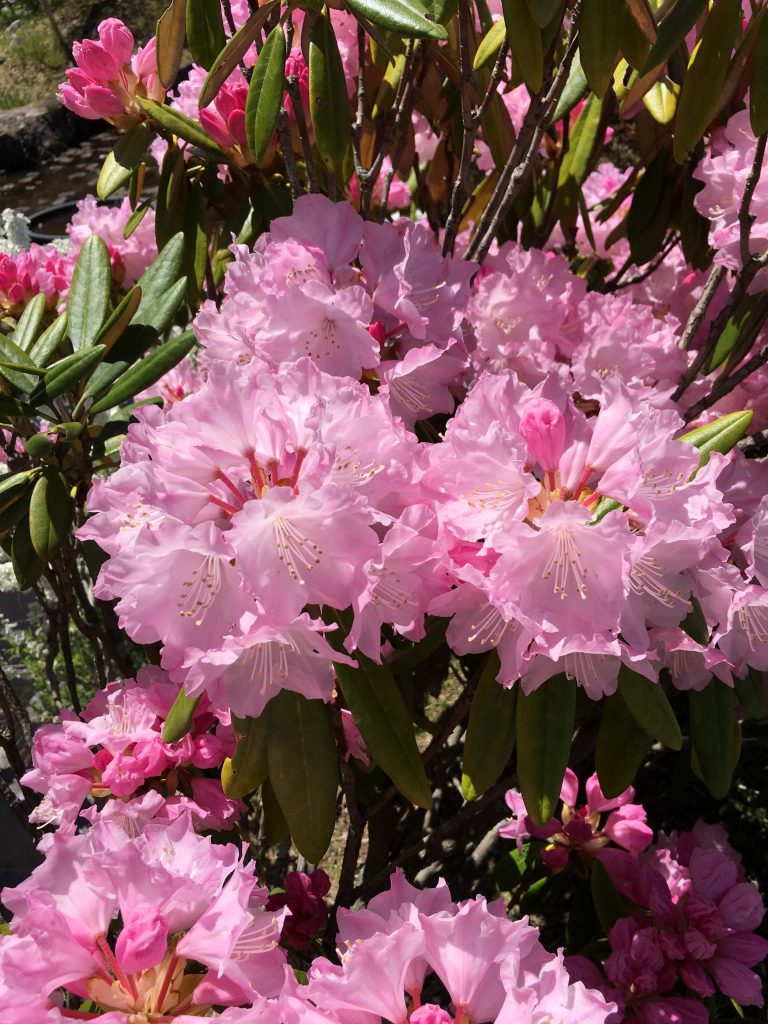
The flowers of Shakunage(rhododendron) that bloomed in the corner of the park are gorgeous and full of tenderness as the sunlight gets stronger day by day. It is said that this Shakunage flower, in fact, became popular after the Edo period. Originally, Shakunage that blooms like sticking to the rocky areas of high mountains is difficult to collect, and even Japanese people who like gardening could not get it. There is a word “Takane no Hana(too good for me)”, but it is also said to actually refer to this Shakunage flower. The appearance of beautiful large flowers blooming in tufts is very spectacular, and European plant hunters brought them back from China and improved their varieties, and now they are widely cultivated in Japan under the name of “Western Shakunage”. There are also Shakunage flowers with names such as “President Roosevelt”, “Madame Masson” and “Gene Marie de Montague”, and Shakunage flowers are also said to be the queen of flowers and trees and the king of flowers.
陽光が日に日に強くなる一日、公園の一角に咲いた石楠花の花はゴージャスでもあり優しさに満ちています。この石楠花、実は一般的に普及したのは江戸時代より後と言われています。もともと高い山の岩場などに張り付くように咲くシャクナゲ(石楠花)は採取がしにくく、園芸好きの日本人にもなかなか手が出せませんでした。「高嶺の花」と言う言葉がありますが、実はこの石楠花のことを指すとも言われています。美しい大きな花を房状に咲かせる姿は非常に見応えがあり、ヨーロッパのプラントハンターが中国から持ち帰って品種改良を加えて、現在では「西洋シャクナゲ」の名前で日本でも多く栽培されるようになりました。「プレジデント・ルーズベルト」とか「マダム・マッソン」とか「ジーン・マリー・ド・モンタギュー」といった名前が冠せられた石楠花もあり、石楠花は花木の女王や花の王とも言われています。


